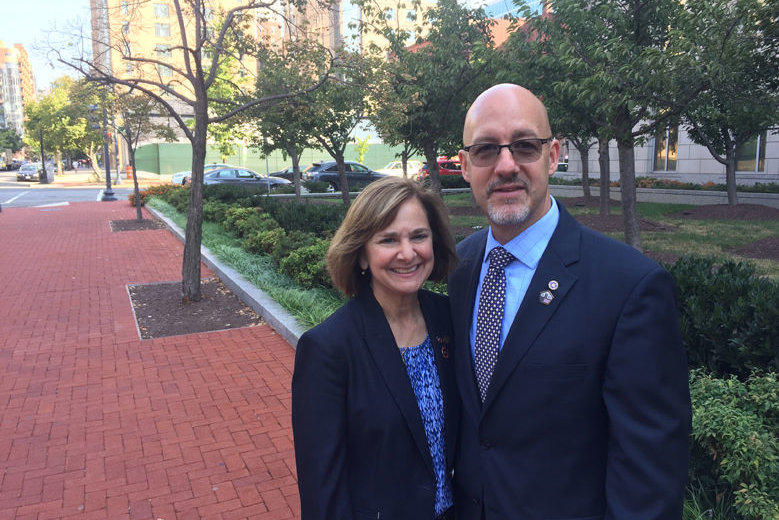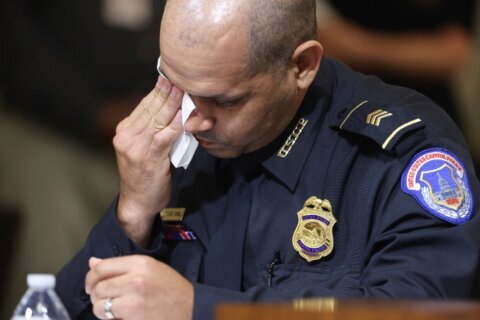
Most people in the D.C. area know what the Pentagon looks like from the outside; fewer of us know what it looks like inside. But what it looked like on 9/11 is seared into the memories of those few who were there on the day of the attacks, and it’s a defining moment of their lives.
FBI Special Agents Tom and Jean O’Connor admit as much. They began dating just after high school, got married and joined the FBI together.
At the bureau’s Washington Field Office, Jean O’Connor led the FBI’s evidence response teams — the agents you see responding to terror attacks such as 9/11 or the Boston Marathon bombings. Such agents also respond to mass shootings, such as at the Navy Yard in 2013, and less-sensational incidents such as bank robberies.
Tom has led one of the teams under Jean’s supervision, which meant he was at the Pentagon about 15 minutes after the plane hit that day.
“It was very surreal,” Tom said on Wednesday, the 18th anniversary of the attacks. “Lines of people walking away from the building. … We literally were inside the building within that first hour.”
Both O’Connors said they remember the massive amount of destruction rendered by the plane. The walls, hallways, even supporting columns that would hint at the hallways — all were destroyed.
“What I remember the first time I went in … we were tied together,” Jean O’Connor said. “There was water flowing from the firefighting, from the sprinkler systems that had gone off. There were no lights on. … None of us were familiar with the Pentagon. And even if we were, it didn’t look like anything that it would have. So we were literally tied together so that we would have our hands free and could do our work, but not get lost and not get separated.”
For the next several weeks, their job was to go through all the rubble. The work focused on two things: Looking for any evidence of the attack, and recovering victims with the help of the military “so their families could get back their remains and take care of that,” Tom O’Connor said. “For us, it was an honor to be able to be there to do that. It’s something that we’ll never forget and hope that no one else has to do it again.”
In the years since then, Tom O’Connor — who until recently also led the FBI Agents Association — has been a staunch advocate for 9/11 first responders.
“Right now, in the FBI alone, we have approximately 50 people who are suffering from some illness related to the toxins they were exposed to at one of the three 9/11 sites,” he said.
He said more than 200 law enforcement officers alone have died since 9/11 — more than twice as many as died on the day itself. Soon, he said, more people overall will have died of illnesses related to the 9/11 attacks than died in the attacks themselves.
Their advocacy is what led the O’Connors to both retire Wednesday, Sept. 11.
They want to get the word out for other first responders “who may not be in the World Trade Center Health Program or register with the Victims Compensation Fund, to give one last push to try to encourage them to do that,” Jean O’Connor said.
“We’ve lost several teammates. Bob Roth, Jerry Jobe, Melissa Morrow, Wes Yoo, Steve Carr and others in other field offices,” she added. “We’ve lost 15 FBI agents and one professional staff member: Homer Lewis was with us at the Pentagon as well.”
They all died from cancers resulting from breathing in toxins, she said. “They were never able to retire, and we will remember them today and every 9/11 for the rest of our lives.”








